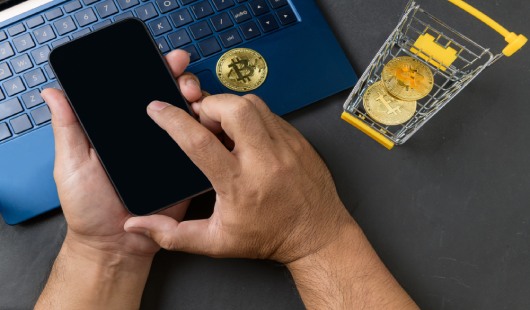1. Introduction to Solana Transactions
Solana is a high-performance blockchain that supports smart contracts and decentralized applications (dApps). One of the cornerstones of Solana's efficiency is its parallel processing of transactions via the Proof of History (PoH) approach combined with the Tower BFT consensus.
Key aspects of Solana transactions:
- A Solana transaction can contain one or more instructions.
- Each instruction targets a specific program (smart contract) on Solana.
- Transactions need to be signed by the relevant authority (or authorities).
Solana has a limit on the overall size of the transaction (including signatures, account addresses, instruction data, etc.).
2. What Are Batch Transactions?
Batch Transactions in the context of Solana refer to creating a single transaction that includes multiple instructions. By bundling several instructions or even sub-transactions together into one "batch," you can reduce overhead, save on network fees, and ensure atomicity for related operations.
- Instead of sending multiple separate transactions (each costing a network fee), you send one transaction that encapsulates all the instructions you need.
- If one of the instructions fails, the entire transaction fails, ensuring atomic behavior (all or nothing).
- Batching reduces the round trips to the cluster, which helps speed up execution in certain use-cases.
3. Why Batch Transactions Matter
- Efficiency: Batching can reduce the overhead cost (in fees) and network usage by combining multiple actions into a single transaction.
- Atomicity: Ensures that either all actions succeed or none of them are applied.
- Speed: Fewer network requests can mean faster end-to-end confirmations from a client perspective.
- Simplified Workflow: Dealing with a single transaction instead of multiple transactions can simplify the logic in your dApp or backend.
4. Key Concepts in Solana Transaction Batching
4.1 Instructions
An instruction specifies which on-chain program to invoke, which accounts to pass to that program, and what data the program should receive. A transaction can hold multiple instructions.
4.2 Accounts
Solana programs require accounts to store both code (the program itself) and data (the state used by the program). For a batch transaction, you must ensure all required accounts are included in the transaction for each instruction.
4.3 Signers
Each transaction must be signed by the account(s) that have the authority for the instructions included.
- If multiple instructions require different signers (e.g., multi-signature scenarios), you need to collect all the signatures before sending the transaction.
4.4 Transaction Size and Limitations
Solana transactions have size limits (currently around 1232 bytes). While you can include multiple instructions, you must keep the total size under this limit.
4.5 Atomicity
If one instruction in the batch fails, the entire transaction is rolled back. This is beneficial for many use-cases where partial execution doesn't make sense (e.g., token swaps, multi-step state changes).
5. Constructing Batch Transactions: Step-by-Step
- Initialize a Transaction Object
Using Solana's client libraries (e.g.,@solana/web3.jsin JavaScript/TypeScript), you start with creating aTransactioninstance. - Create Instructions
- For each action you want to perform, build the instruction using the relevant program's client library.
- Each instruction specifies the program ID, relevant accounts, and instruction data.
- Add Instructions to the Transaction
- Once you have your instructions, add them sequentially to the
Transaction.
- Once you have your instructions, add them sequentially to the
- Specify Signers
- Collect all signers (wallets or keypairs) whose signatures are required.
- This step might involve multiple Keypairs if the instructions require them.
- Send and Confirm
- Use a connection to a Solana cluster (mainnet-beta, devnet, or testnet).
- Sign and send the transaction using
sendAndConfirmTransactionor similar methods. - Wait for confirmation.
6. Examples (JavaScript/TypeScript)
Below is a simplified TypeScript example that demonstrates a batch transaction using the @solana/web3.js library. We'll show two hypothetical instructions:
- Transfer some SOL to another wallet.
- Invoke a program to update some data in an account.
6.1 Prerequisites
Install the Solana web3 library (if not already installed):
npm install @solana/web3.jsMake sure you have a funded Keypair in your local environment or a connected wallet for the signer.
6.2 Example: Batching Two Instructions
import {
Connection,
PublicKey,
Keypair,
SystemProgram,
Transaction,
sendAndConfirmTransaction,
LAMPORTS_PER_SOL
} from "@solana/web3.js";
// For demonstration, we generate a new keypair (in practice, use your own)
const payer = Keypair.generate();
const recipient = Keypair.generate();
(async () => {
// 1. Establish a connection to the cluster
const connection = new Connection("https://api.devnet.solana.com", "confirmed");
// Airdrop to the payer so it has some SOL to pay for fees and transfers
// This step is only for Devnet usage. On Mainnet you have to purchase or receive SOL.
const airdropSignature = await connection.requestAirdrop(
payer.publicKey,
2 * LAMPORTS_PER_SOL // 2 SOL
);
await connection.confirmTransaction(airdropSignature);
// 2. Create a Transaction
let transaction = new Transaction();
// 3. Build Instruction #1: Transfer some SOL to another account
const transferInstruction = SystemProgram.transfer({
fromPubkey: payer.publicKey,
toPubkey: recipient.publicKey,
lamports: 0.5 * LAMPORTS_PER_SOL, // transferring 0.5 SOL
});
// 4. Build Instruction #2: Example of calling a program (SystemProgram as placeholder)
// Here, we'll do a transfer of 0.1 SOL to the same account,
// just to demonstrate multiple instructions in one transaction.
const anotherTransferInstruction = SystemProgram.transfer({
fromPubkey: payer.publicKey,
toPubkey: recipient.publicKey,
lamports: 0.1 * LAMPORTS_PER_SOL,
});
// 5. Add both instructions to the transaction
transaction.add(transferInstruction).add(anotherTransferInstruction);
// 6. Send and confirm the transaction
try {
const txSignature = await sendAndConfirmTransaction(
connection,
transaction,
[payer] // List all signers here
);
console.log("Transaction Signature: ", txSignature);
} catch (error) {
console.error("Error sending batch transaction:", error);
}
})();
Explanation:
- We create two instructions, both from
SystemProgram.transfer. - We add both instructions to a
Transaction. - We sign the transaction using the
payerKeypair and send it. - The result is a single transaction that executes two SOL transfers.
6.3 Advanced Example: Program Instruction
If you wanted to call a custom program (e.g., an Anchor-based program), you would construct the instruction using that program's IDL (Interface Definition Language) and client code, then add it the same way.
7. Practical Use Cases
- Token Swaps: In a decentralized exchange (DEX), you might want to swap tokens and update user balances in a single atomic transaction.
- NFT Minting and Transfer: Minting an NFT and transferring it to a user's wallet within one batch can simplify user flows.
- Protocol Interactions: Complex DeFi protocols might require multiple steps (e.g., deposit, borrow, stake) which can be done in a single transaction for a better user experience.
- Multi-Signature Wallet Operations: Combine multiple approvals or instructions into one transaction for clarity and atomicity.
8. Best Practices and Considerations
- Transaction Size: Always watch out for the maximum transaction size limit (~1232 bytes). The more instructions (and signers) you add, the bigger the transaction.
- Parallel Execution: Solana can process many transactions in parallel, but if your instructions require modifying the same accounts, they won't be processed in parallel. Keep account locking in mind.
- Error Handling: If any instruction fails, the entire transaction fails. Make sure all instructions are valid before sending.
- Signers vs. Non-Signers: Only include signers who are absolutely necessary to reduce overhead.
- Testing on Devnet: Always test your batched transactions on Devnet or a local test validator to ensure correctness and gather performance metrics.
9. Potential Pitfalls
- Unexpected Atomic Rollback: If part of your multi-instruction logic has a potential to fail (like insufficient funds), the entire transaction will fail.
- Too Many Instructions: You can exceed the transaction size limit quickly if you're not careful.
- Account Locking: Batching instructions that modify the same account multiple times can lead to locking conflicts.
- Exceeding Compute Budget: Complex or heavy instruction logic might exceed the default compute budget for a single transaction.
10. Conclusion
Batch transactions in Solana are a powerful feature that can improve efficiency, reduce fees, and ensure atomic operations. By combining multiple instructions into a single transaction, dApp developers can streamline user workflows and create more robust decentralized applications. However, it's crucial to plan carefully, manage transaction size, handle signers correctly, and consider the atomic nature of the batch.
When used correctly, batch transactions can greatly enhance the user experience and reliability of your Solana-based applications.

Our Offices
INDIA
Emaar Digital Greens, Sector 61,
Gurugram, Haryana
122011.
Welldone Tech Park,
Sector 48, Sohna road,
Gurugram, Haryana
122018.












April 18, 2025 at 12:14 am
Test